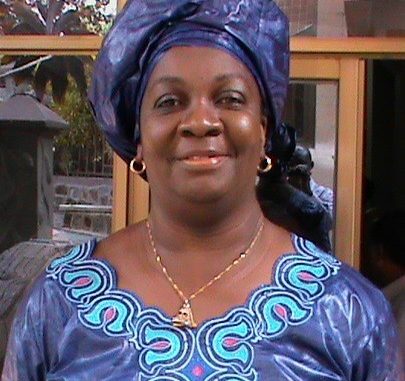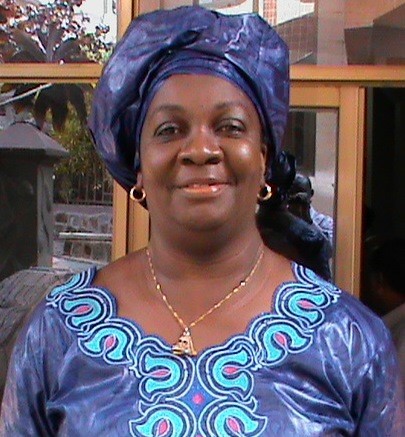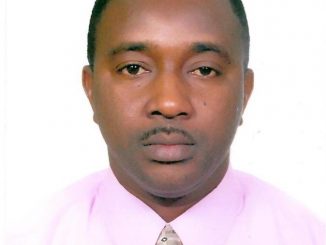
By Jonathan Abass Kamara
The high profile Sierra Leone team led by the Deputy Minister of Health and Sanitation 1, Madam Madina Rahman, comprising the Chief Medical Officer, Dr. Brima Kargbo, Medical Superintendent and Surgeon Specialist, Dr. Thaim Buya Kamara and the Principal Donor/NGO Liaison Officer, Mr. Yayah Conteh show case Sierra Leone’s resilience and recovery programmes with partners collaboration in effective health systems strengthening.
Deputy Minister of Health and Sanitation 1, Madam Madina Rahman
Guided by the Ministry of Health and Sanitation Health Sector Strategic Plan (2015-2020), and by the 2010 Free Health Care Initiative, the team was able to spread out the different initiatives that have been developed and implemented to accelerate the recovery of the health sector. Two priorities on the Early Recovery July 2015-March 2016 (6 months) plan on health care workers and patient safety by guaranteeing that there is no new infection happened in health facilities by ensuring that all facilities are equipped and staff trained on infection prevention and control protocols, water and sanitation health practices, and continued effective surveillance system highlighted. The restoration of the provision of basic health care for Sierra Leoneans as a second priority which focuses on a limited number of key programmatic areas such as HIV, malaria, TB, Reproductive, maternal and newborn child health to ensure provision and utilization of positive services was also established.
The President’s Recovery Priorities (10-24) months April 2016-June 2017 Plan built on the achievements from the 6-9 months Recovery Plan, focusing on saving the lives of 600 women and 5,000 children for the reduction of the high maternal, neonatal and child mortality in Sierra Leone, capturing programmes for pregnant women and lactating mothers, ensuring that newborn and children under five get tested and treated for malaria, pneumonia and diarrhea.
Other key interventions highlighted in the 10-24 months plan include: strengthening referral system with paramedics and National Ambulance Service and Community Health Workers, the absorption of 2,850 additional trained Midwives, State Enrolled Community Health Nurses, Maternal Child Health Aides at health facility level, reorganized supply chain of the availability of essential drugs, prevent, detect and respond to epidemics and ensure zero cases of EVD, strengthen health data system, integrated disease surveillance, reporting and response, improve community sanitation, hygiene, and solid waste management, and ensure that all Ebola Virus Disease Survivors get access to basic and specialized health care among other key areas formed the nucleus of the second phase of the Presidential Recovery Plan.
Dilating on the achievements made so far during the President’s Recovery Priorities Phase, the Deputy Minister enumerated success stories which include the introduction of a new electronic stock monitoring system for drugs at facility level, establishment of nine Adolescent and Youth Friendly Centres to provide sexual counselling and family planning, built and upgraded funding for Le 4 million Long Lasting Insecticide Beds Nets, secured for distribution in 2017, 100 solar fridges for vaccines storage already distributed and 86 installed in community health centres. EVD survivors aged 15 (males) and above, semen tested, and health care services ongoing. Among the Ministry’s Flagship Projects the National Emergency Medical Services (NEMS) project has been included in the 10-24 months Recovery Plan to strengthen district capacity.
Highlights on achievements made during the early recovery period includes improvement in the human resource for health, the rehabilitation of 12 community health centres and nine district hospitals upgraded to emergency obstetric and neonatal care, water and sanitation health facilities installed in 213 peripheral health units and 20 hospitals: 29,000 children treated for severe acute malnutrition nationwide, Malaria treatment administered to 570,000 malaria positive children under five, more than 3,000 HIV positive patients put back on treatment, and over 2,600 Ebola survivors received basic health care treatment, 3,000 got their eyes examined.
The Team Leader reminded the meeting that the effect of the Ebola outbreak is not just related to the disease but on public health services, particularly on maternal, child and newborn care, the most vulnerable population. The year prior to the Ebola outbreak, the 2013 Sierra Leone Demographic Health Survey (SLDHS) demonstrated an increased uptake of reproductive maternal newborn child and adolescents health services, mainly due to the implementation of the Free Health Care Initiative by the Government in 2010.
The good news is that the use of family planning methods has doubled, percentage of births in health facility more than doubled since 2008 from 25 percent to 54 percent, 97 percent of women received at least one antenatal care visit by a skilled provider, and the proportion of adolescent girls who were already mothers or pregnant women have decreased from 34 percent to 28 percent.
Partners lauded the Sierra Leone team and pledged their continued support.




